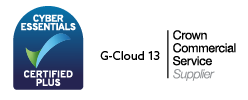We get it – you’re constantly under pressure to improve your customer service, reduce your IT overheads and increase efficiency. Frequently, organisations are expected to do all the above with fewer resources than they’ve ever had before.
Whilst this may seem impossible, the advent of UCaaS (Unified Communications as a Service) has enabled IT departments to be business drivers rather than cost centres.
If you’re thinking of selecting a new UCaaS provider, there are a few key questions you should ask:
1. Is your solution a true cloud offering?
Don’t be afraid to ask for a supporting explanation for this one!
This question is hugely important, as the answer could impact your organisation, and your bottom line. Whilst it may seem like “cloud solution” should cover everything, in reality you’ll find there are true cloud solutions, hosted solutions, and hybrid solutions on the market today – and all of them can be found under the “cloud solution” umbrella.
So how can you tell the difference?
| Cloud | Hosted | Hybrid |
|---|---|---|
|
|
|
2. How will a cloud-based UC solution increase productivity in my organisation?
Service Up-time:
Vendors in the UCaaS landscape, like Fuze, offer a 99.99% uptime guarantee – with service credits. This means you can say goodbye to issues like network degradation on phone calls and virtual meetings; and help your employees to be more productive.
Usability:
Find a solution that was designed for the consumer but built for the enterprise. Something your employees will want to use. All users have different wants and needs, so a one-size-fits-all solution won’t work. Some may prefer a mobile experience whilst others prefer a desktop. Help you team get connected and (importantly) stay connected by giving them a solution that’s simple and easy to use.
Simplicity:
Find one solution that meets all your business needs. A true UCaaS solution should include enterprise voice, messaging, audio and video conferencing, and web collaboration as components of the overall solution. Including all components on a single, global platform means users can switch between modes of communication and make decisions faster than ever before.
Integration:
Integrate your UC solution with the cloud applications your organisation is already using. Think Salesforce.com integrations as an example. Integrations that appeal to your Line of Business Owners will increase adoption and help IT to retain control of business data. Avoid shadow IT by involving other areas of the business in your decision-making process and build your internal champions.
Re-Prioritise:
Free up IT staff previously stuck maintaining and managing your on-premise UC solution to work on other initiatives and priorities. Save IT staff several hours a week and ensure your end users will have all the up-to-date features and functionality without IT intervention.
3. How do you support the mobile workforce?
When choosing a UC solution, be sure to ask about the mobile solution. Pay close attention to the application, particularly to the look and feel. If you want end-users to actually adopt and use the solution you choose, it needs to be similar to what they know and use daily as consumers.
4. How do I expand my UC solution to accommodate business growth?
True cloud communication grows with you, seamlessly. Adding a new user or location should be a simple matter of licensing and provisioning.
As a business grows, it becomes increasingly important to have a proper disaster recovery solution, including distributed architecture design and automatic failover. Your business communications provider should have multiple data centres – failover to another piece of hardware located in the same location is not sufficient for enterprise DR purposes.
If you are expanding your business across the globe, look for a solution that provides a localized calling experience for users. Seems simple, but you’d be surprised how many providers don’t offer localized calling.
5. What is the implementation process?
As traditional telephony begins to take a back seat to software-driven cloud communications platforms, it’s becoming critical for businesses to have a future proof unified communications technology road map, combining IT and telecom goals into a single, integrated strategy.
You need to ensure you’re adopting a holistic view of the technologies that exist in your organisation, the desired outcome for your business and a team of UC experts who can help you to bring it all together. Partnering with UC providers who offer cloud communications expertise will help you to design a solution which meets specific business needs and implement the solution in tandem with your Project Management team.
If you're interested in moving your communications to the cloud, or you'd like to explore the Unified Communications and Collaboration options available to you, why not check out our Unified Communications platform, read up on our UC partner, Fuze, and get in contact to arrange a free, no-obligation discovery session.


